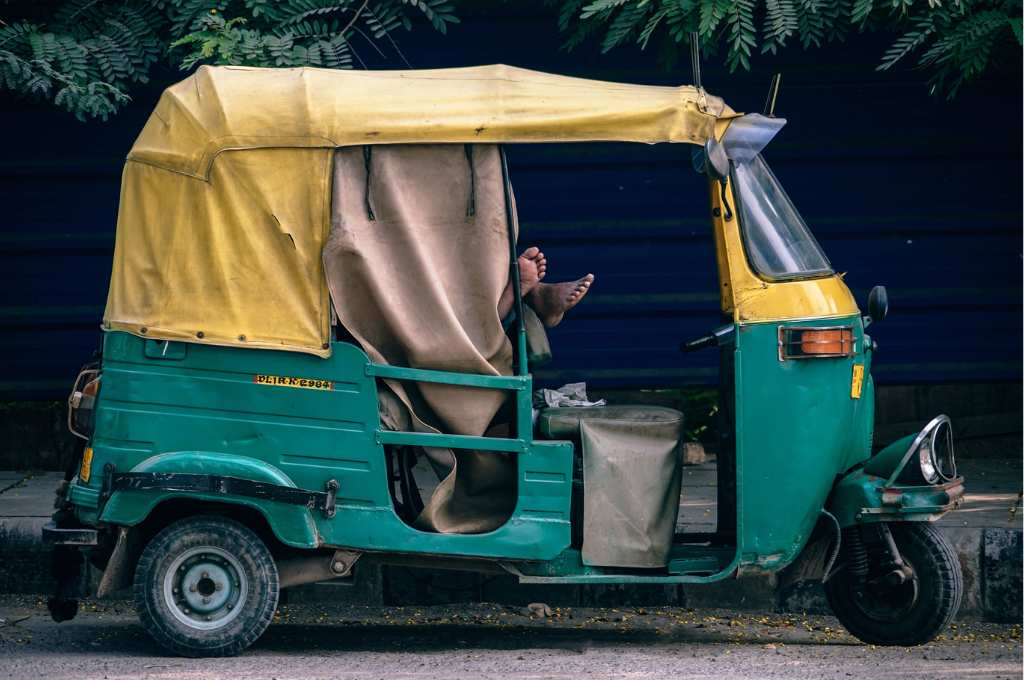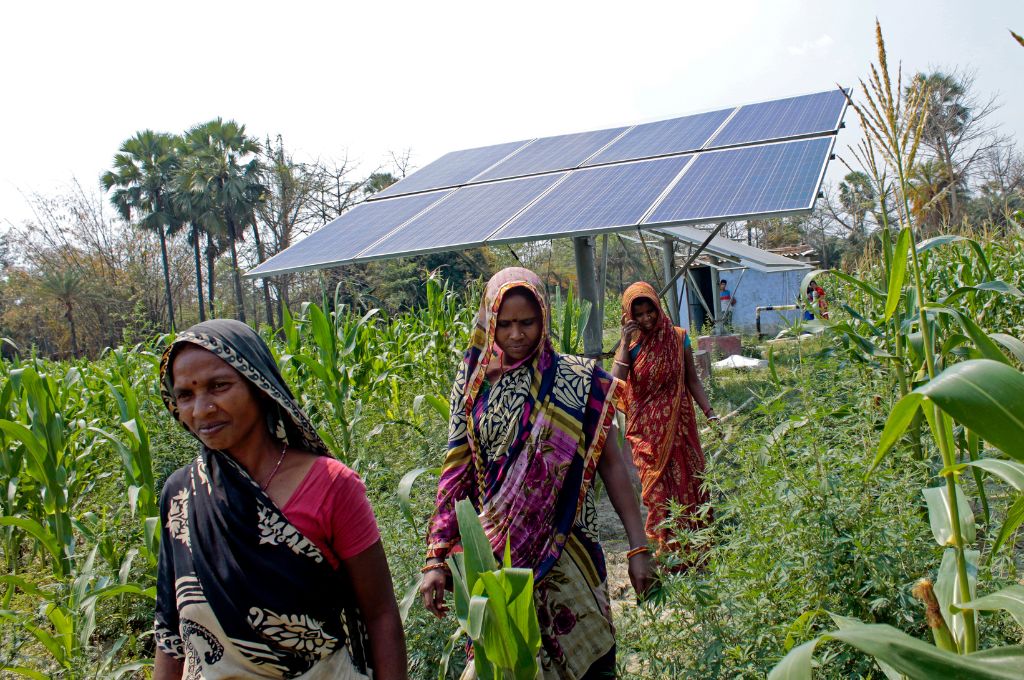The International Union for Conservation of Nature (IUCN)’s threat classification system identifies ‘climate change and severe weather’ among the 12 categories of threats to wildlife.
According to a landmark report by Intergovernmental Science-Policy Platform on Biodiversity and Ecosystem Services, the distribution of 47 percent of the proportion of land animals and 23 percent of threatened birds may already have been negatively impacted by climate change.
In India, the National Wildlife Action Plan (NWAP) 2017–31 acknowledges that the country’s protected areas were designed at a time when climate change was not a criteria for wildlife conservation. The NWAP explains how wildlife species will need to disperse to more suitable habitats in response to climate change.
At present, India has less than 5 percent of land in the form of protected areas for wildlife. These protected areas are often surrounded by densely populated settlements, providing several opportunities for human–animal interactions and, invariably, conflict. According to research done by Centre for Wildlife Studies (CWS)–a nonprofit that works on wildlife research, conservation, policy, and education—India is a high-wildlife, high-conflict country, with an average of 80,000 incidents reported per year to the government.
Patterns of conflict
There are broadly five types of conflict: people losing crops, property damage, livestock being attacked, human injury, and human death. Approximately 70 percent of the conflict is crop and property damage. Livestock damage is approximately 15–20 percent; human injury or deaths comprise 5 percent, which is remarkably low given the high densities of people that come into close contact with large animals such as elephants, pigs, tigers, leopards, and bears.
Dr Krithi Karanth, executive director of CWS, explains the circumstances under which human–wildlife conflict becomes extreme. “If an elephant comes on to a farmer’s field and ruins someone’s crops 70 times in seven years, which we’ve seen through our Wild Seve programme, it is natural for people to react. They may lay down loose wires in their fields, leading to elephants getting electrocuted when they come back to forage. This is an extreme example of what can happen if you don’t help people overcome their losses. And when there is a human injury or death, mobs form with large groups of people attacking forest officers because they believe that the animals are the officers’ responsibility. However, these are extreme situations and don’t occur very often,” she says.
India has held on to its wildlife despite large-scale development, land-use change, and economic growth.
The issue of human–animal conflict isn’t restricted to India alone. In fact, India has held on to its wildlife despite large-scale development, land-use change, and economic growth because there’s tremendous cultural tolerance for animals. According to Krithi, “In addition to the reverence towards elephants because of Ganesha, we’ve also had many people tell us, ‘These animals were here before us, we have to learn to share space with them.’ This is what sets India apart from other Asian countries. Countries such as China, Thailand, and Vietnam have very similar animals, but many of them are gone now because their relationship to wildlife is different.” Krithi believes that India has maintained the very precarious balance between people and animals because of this inherent culture and belief that you have to share space.
Avinash Krishnan, executive director of A Rocha India—an organisation that works on scientific research, environmental education, and community-based conservation projects in the Bannerghatta Hosur landscape of southern India—concurs. “As a country, we’re far more resilient to conflict. Hence, there is much that we can intervene and do, because the basic foundation among communities is one of acceptance and positivity. It’s only when you let conflict levels escalate to a point where people start losing their lives and livelihoods severely that they retaliate.”
He adds that if we can keep conflict at manageable levels, and be accountable for it, people will be more accepting. “The problem is that no one takes accountability for conflict. When farmers are affected by crop raids, it’s the responsibility of the forest department to check on them immediately. But they don’t do so because they are scared the farmers will direct their anger towards them, since they believe that the animal is the responsibility of the forest department. But we’ve seen that when we approach people (as a conservation organisation), even if we take the side of the elephant, they feel heard and acknowledged.”

Conflict affects people at every level
Conflict destroys livelihoods, and impacts their physical and psychological well-being. For instance, in the area around Bannerghatta National Park (BNP), situated in India’s Eastern Ghats, crops are constantly exposed to elephant depredations. According to Avinash, on an average, farmers in the region invariably lose approximately an average of 10 quintals of ragi from an overall output of 15 quintals per acre of land. For a subsistence farmer, losing 75 percent of their yield leaves them with nothing. They have limited alternative work opportunities since they are unskilled and unable to take up other jobs, even as daily-wage workers, in the neighbouring big city. Moreover, there is generally no support system in the form of subsidies or social protection schemes in this region. Therefore, in addition to helping farmers manage this elephant problem that they’re exposed to, Avinash says that it is equally important to try and improve their economic standards so they can at least have a stable income, despite the livelihood setbacks due to human–elephant conflict.
Conservation has to be practical
Traditional protection measures have limited effect. CWS has scientifically evaluated the different measures people take to mitigate conflict—electric or solar fencing, growing chilies or ginger, digging ditches. Their research showed that much of the investment in protection of land doesn’t work. Fencing, says Krithi, works if people can pay their electricity bill consistently or maintain the batteries of a solar fence. But more often than not, CWS has seen these models fall apart after the initial excitement because of lack of maintenance.
In terms of animal movement, foraging and forest usage patterns are changing.
It is also important to factor in the impact of climate change. Unseasonal and erratic rains affect crop yields and thus farmer incomes, making them even more vulnerable. In terms of animal movement, foraging and forest usage patterns are changing. Because certain species don’t flower, fruit, and flush at regular seasons, animals change their foraging routes, causing a sharp imbalance.
Avinash says that certain animals are not supposed to be in certain parts of a forest but as they change their movements, they tend to alter the ecosystem considerably. So, the natural order of things is getting impacted. For instance, elephants are moving into Himachal Pradesh, and other colder areas of the country, where no sightings of elephants had been reported for four decades. When elephants move in, they alter the existing forests, influencing the survival of a range of established species.
Mitigating conflict: Solutions that work
1. Building trust with communities
Nonprofits that work on conservation such as CWS, A Rocha, and Nature Conservation Foundation spend an inordinate amount of time building trust and goodwill in the local communities. For instance, during COVID-19, CWS ran relief campaigns where they delivered medical supplies to 610 primary health centres in the Western Ghats. It helped them build enormous goodwill since no one else was present in those areas. When CWS provided support to the communities during the pandemic, the locals realised that the organisation cared for people’s well-being and not just about protecting wildlife.
2. Filling the knowledge gap
Most people involved in conservation efforts do not have that kind of indigenous, site-specific knowledge needed to understand the situation and come up with solutions. According to Avinash, for conservation to work, it is crucial to understand the dynamics of communities, or the ecology and biology of certain species that are involved in the conflict. “When this knowledge isn’t available, we end up devising solutions that don’t have long-term effectiveness and are short-lived,” he says.
CWS runs community workshops called Wild Surakshe with people who are at the intersection of wildlife and communities such as gram panchayat leaders and ASHA and Anganwadi workers, training them in understanding how conflict happens, how to stay safe, the six common diseases that spread between wildlife, people, and livestock and how to stop them, and so on. Krithi says that these frontline partnerships also help them look more closely at the needs of the community, and work out solutions to resolve core conflict.
3. Building a bouquet of solutions
Since the dynamics of each conflict are specific to the local environment, context, and ecology, the solutions must be too. Avinash cites the example of an elephant signal that was devised as a simple solution to a big problem. Unlike other protected areas, BNP has thoroughfares that cut across the park. Since these roads aren’t regulated, there were a number of accidental collisions between elephants and people. One simple intervention was to put up an ‘elephant signal’ similar to a traffic signal, which acts like an early warning device. It lets people know when an elephant is moving and signals them to wait, similar to how it works for traffic in cities. The locals accepted this intervention since it allowed them to continue their daily chores and carry on with their livelihoods.
A Rocha India has also been working with communities to secure some form of economic stability for farmers grappling with elephants raiding their crops. Avinash says, “We introduced a few indigenous finger millet and lentil varieties that were more resistant to environmental changes. Even if climatic conditions varied, the crops had steady yield.”
Avinash adds that it is impossible to have a scalable model for conservation. Instead, he says it’s a series of small, very localised interventions such as these—elephant signals, alternative crop choices, beekeeping as an income source—which when you stitch together gives you a solution that works for conservation and the communities.
4. Helping people access wildlife compensation funds
Compensation for losses incurred due to conflict is an important mitigation strategy. Krithi says that many states have money set aside for wildlife compensation; the challenge is making sure that people who experience loss due to human–animal conflict are able to avail of it.
CWS, through its award-winning Wild Seve programme, acts as a bridge, making sure that the claims are not rejected and that the applicants receive funding. Centred around the simple idea of a toll-free number, Wild Seve now reaches more than 1,500 villages across four parks in India. If there is an incident, people call the number, following which CWS staff arrives on the scene, helps document the incident, fills the paperwork for the claims, takes photographs, and does whatever else is required by the government to recognise it as a valid claim.
In the seven years that it has been operational, Krithi says that they have helped file more than 22,000 claims, and people have received more than a million dollars in compensation from the Karnataka and Tamil Nadu governments.
5. Encouraging dialogue between key stakeholders
There are three sets of stakeholders when it comes to human–animal conflict: the forestry departments in the government because they’re the ones responsible for managing the conflict; local communities that are directly impacted by conflict; and nonprofits and practitioners who are trying to form a bridge between the two and help address the issue.
Avinash says that it is critical to develop a dialogue, coordination, and cooperation among these stakeholders, but at the moment it is almost non-existent. “Unless we stop seeing it as someone else’s problem, and start doing something about it collectively, today’s emerging problems, which we have already inherited, are going to manifest as more intractable issues in the long term.”
According to Krithi, nonprofits have a key role to play but their work and value is being diminished, and that needs to change. “Nonprofits might not be able to solve a problem at scale like governments can, but they have the knowledge, tools, and more importantly deep insight and expertise around interventions that have worked over the years.” She suggests that governments bring in nonprofits as knowledge partners within the government system, since they can build the necessary programmes to manage this human–animal conflict.
Everyone should be thinking about conservation
However, conservation efforts need not be limited to a few nonprofits, a smattering of young activists, or a small segment of the urban elite. According to Avinash, everyone—from a carpenter to a minister—should do conservation.
At an institutional level, organisations working in education can find a way to factor in conservation as a subject young children study in schools. CWS’s Wild Shale programme, for instance, is designed for 10–13-year-old schoolgoing children living in rural areas around wildlife reserves in India. As part of the programme, they use art, storytelling, and games to teach kids about environmental science and conservation in a way that makes them pay attention and gets them to care.
From a societal point of view, Avinash suggests making the local politicians—MLAs and MPs—accountable. “People should ask elected representatives what their mandate for conservation is. Today, we talk about poor roads, no street lights, etc. when we meet our representatives. But conservation impacts us just as much as these things. Because if we protect a forest, everyone benefits from that thriving ecosystem. It reduces temperatures, cleans the air. This should be the messaging and not the current one, which is one group against another, environment against development,” he says.
The manner in which human–animal interactions are covered in the media needs to change.
Media too has a crucial role to play. According to Krithi, the manner in which human–animal interactions are covered in the media needs to change. “They should stop sensationalising human–animal conflicts. Whether it’s a tiger at fault for killing people, or where people did something wrong, there is a larger context in which all of this happens. Replaying endless clips of people or animals being killed is not healthy. When media sensationalises these high-conflict incidents, it doesn’t help conservation or people in the long term,” she says.
Informed stances taken by everyone in society can make a huge difference in the lives of many animals, help understand the implications on the locals that live around these animals, and also contribute to conservation in a holistic and effective manner.
Halima Ansari contributed to this article.
—
Know more
- Read this article to understand how human-wildlife conflict is among greatest threats to animal species.
- Read this article to learn more about the human-tiger conflict debate.
- Watch this video to learn how India’s Wildlife Protection Act is disproportionately impacting marginalised communities in the country.







